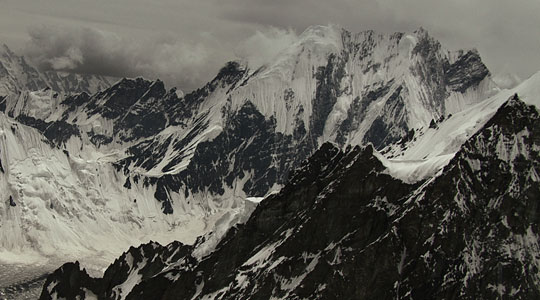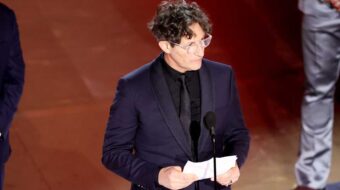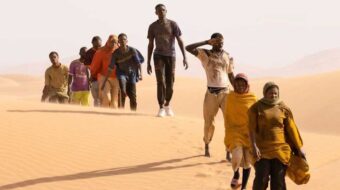
The Summit provokes many questions, but should appeal to aficionados of adventure (in particular mountaineering) and/or jaw-dropping nature cinematography, armchair travelers, and even mystery buffs. It’s about the 2008 expeditions to the peak of K2, the second highest mountain on Earth (after Mt. Everest), located in a remote Himalayan region between Pakistan and China.
One out of every four trekkers who ascend the so-called “Savage Mountain” never makes it back down to live and tell the tale. In August (a month when melting ice causes increased hazards) 2008, 18 climbers, including various European, Asian, and international mountaineers, and their Sherpa guides, reached K2’s pinnacle. But then, in one of the deadliest episodes in mountaineering history, 11 of them mysteriously perished on the way down.
Director/producer Nick Ryan and writer Mark Monroe use various film techniques to try and unravel the enigma of what happened. The filmmakers artfully utilize archival footage, in particular of an earlier 1954 Italian expedition to K2, which similarly resulted in controversy. There are also many original interviews with the survivors. The differing takes on what occurred and why is Rashômon-like.
The Summit also uses amateur video shot by a number of the climbers using various recording devices to document their ascents and descents. How exactly were the filmmakers able to get that footage? Is it possible that, due to innovations in lightweight, reasonably priced video equipment, all of the scenes were authentic and shot by the summiteers? If so, this motion picture pushes the envelope of documentary-making.
Unfortunately, a substantial portion of the film is composed of reenactments. In fact, Ryan took a camera crew more than a continent away from Pakistan to shoot at the Eiger Mountain near the Jungfrau, with the Swiss Alps doubling as the Himalayas.
The thorny issue of recreations in “documentaries” has bedeviled cinema since the 1920s, when Robert Flaherty shot his ethnographic films Nanook of the North and Moana of the South Seas, which seemed to be realistic records of his far-flung indigenous subjects’ way of life. As it turned out, Flaherty’s Eskimos and Polynesians reenacted various activities, as opposed to merely being captured by his poetic camera eye.
The Summit is debatably a combination of feature and documentary filmmaking, where elements of fiction and nonfiction commingle.
Another noggin-scratching factor is the climbers’ motivation. Why would anybody risk life and limb to ascend this death-defying mountain? The reason for this passion for peaks piques one’s interest.
One of The Summit‘s interviewees blithely says, “The bigger the dream, the bigger the risk.” And the wife of the Irish summiteer Ger McDonnell, a focal point of this semi-doc, tells the camera, “He knew he could climb it and climb it safely.”
But apparently not, because, along with 10 others, he didn’t come back alive. Even among the survivors, two of them reportedly lost toes to frostbite.
A female interviewee remarks, “People think we’re mad” – but then the film stoically marches on. The biggest lacuna in The Summit is not trying to get under the skins of its thrill-seekers, to find out what makes them tick. Are their routine lives back home so boring and meaningless that they try to fill the void with these dubious deathly enterprises? Do they need the rush of adrenalin to prove they are still alive, and that life has a purpose? Are they sexually dysfunctional? Inquiring minds want to know! But the filmmakers might possibly have lost the cooperation of their subjects if they pursued a less admiring, more critical line of questioning.
Nevertheless, The Summit depicts admirable, as well as despicable, qualities. Some are so hell-bent on their quest to conquer K2 that they decline to help endangered climbers in their moments of need; others, such as McDonnell, display courage and compassion in their efforts to help. Above all there are the Sherpas, the Nepalese guides who are professional mountaineers. The intrepid Pemba Gyalje appears to be a genuinely heroic and capable figure. Pemba is a Nanook and Moana for our time: He, along with the awe-inspiring scenic cinematography, are the high points of The Summit.
“The Summit“
Directed by Nick Ryan
2013, Sweden, rated R, 95 min.
Photo: Official site

MOST POPULAR TODAY

High Court essentially bans demonstrations, freedom of assembly in Deep South

Zionist organizations leading campaign to stop ceasefire resolutions in D.C. area

UN warns that Israel is still blocking humanitarian aid to Gaza

U.S. imperialism’s ‘ironclad’ support for Israel increases fascist danger at home







Comments